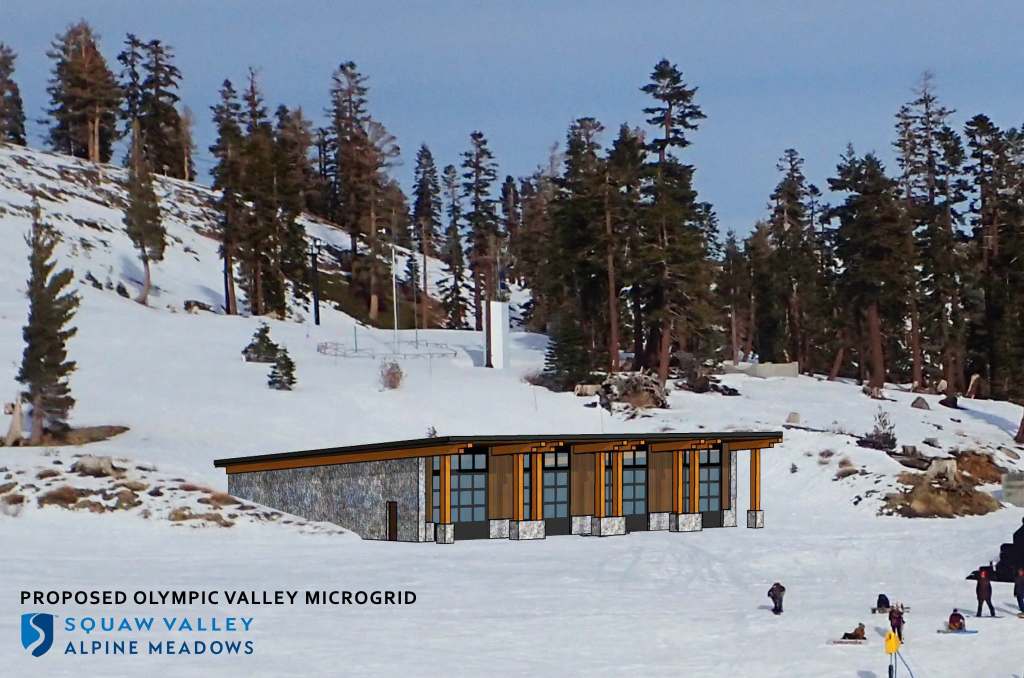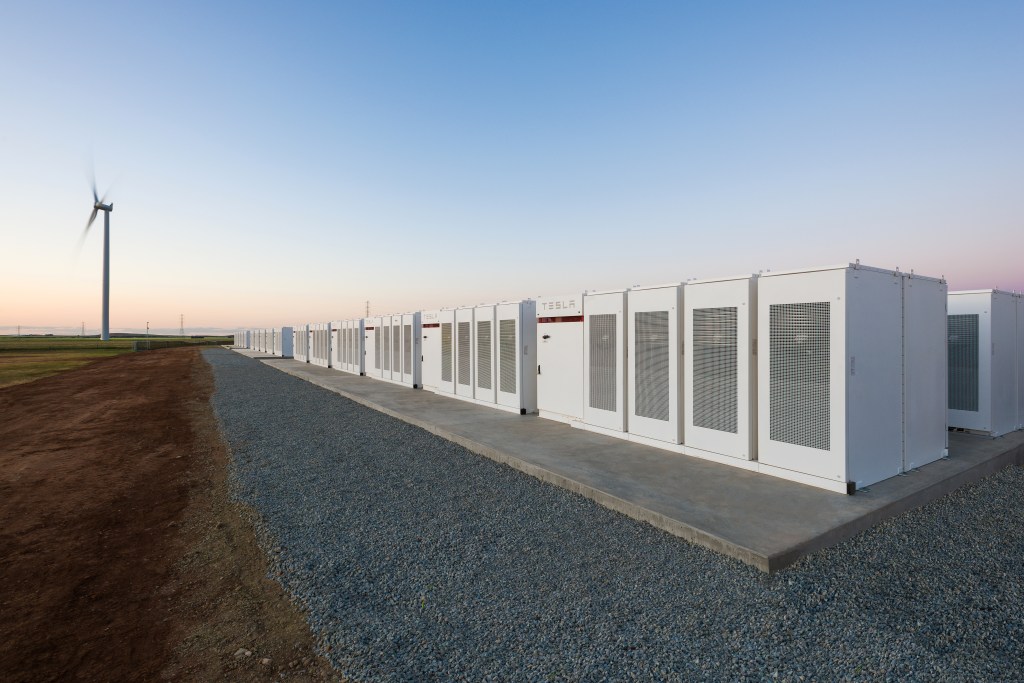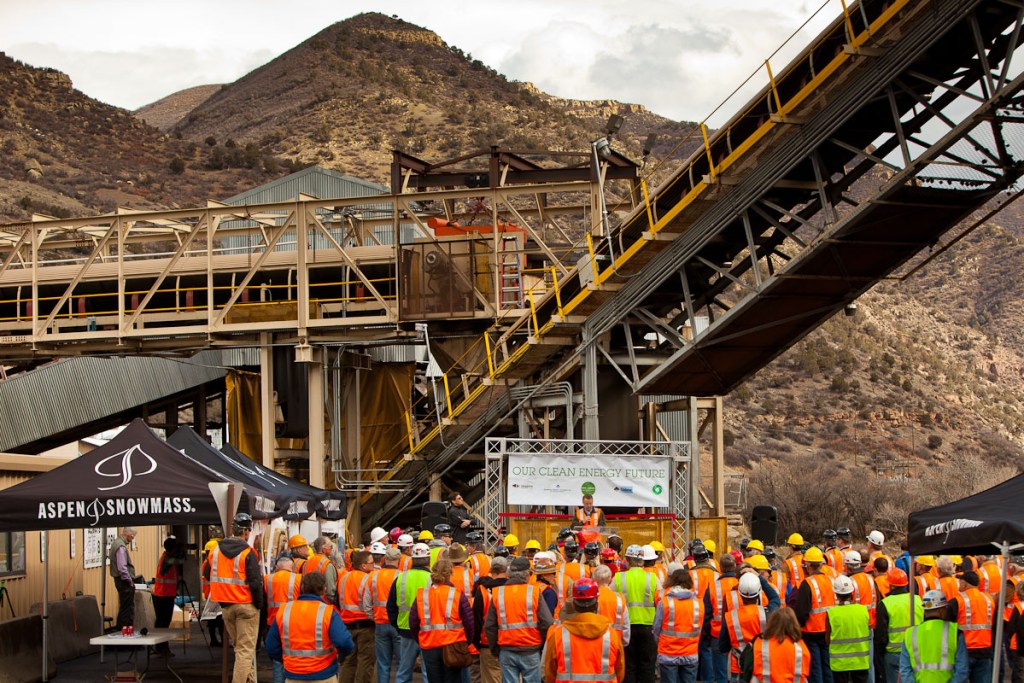Squaw Valley announces a new battery storage system that will help the ski area to rely on 100 percent renewable energy.
Let’s face it. Operating a ski resort requires a lot of energy to power chairlifts and hotels, water for snowmaking, and gas for groomers and snowmobiles. But over the years, many ski resorts have realized their responsibility and duty to be environmental stewards, despite—or perhaps because of—that large footprint.
This week, California’s Squaw Valley and Alpine Meadows announced plans to partner with Tesla and the area’s Liberty Utilities to build a new battery storage system high up on the mountain. Called the Olympic Valley Microgrid Project, and still pending approval from local regulatory agencies, it would store up to 8 megawatts of energy generated from a variety of sources, including solar. All that energy would be returned to the area’s power grid, providing back-up power to the resort and surrounding community in the event of an electricity outage. The battery system supports Squaw’s recently announced goal to run on 100 percent renewable energy as early as December 2018, by utilizing solar energy and working to cut its carbon footprint nearly in half.
“We take accountability for our company’s contribution to CO2, hence our longstanding and unyielding internal focus on reducing our overall footprint,” Andy Wirth, Squaw Valley’s president and COO, said in a statement. “We’re glad to finally advance on this key, strategic level changeover to 100 percent renewably-sourced energy.”

The proposed Olympic Valley Microgrid Project. Photo Credit: Squaw Valley
In a press conference at Squaw Valley on Monday, Wirth said to the crowd, “How do we reduce our carbon footprint, not just as a company, but also as a community? How do we create more reliability and resiliency in our grid?” The answer, he said, was through this partnership with the local utility company and tech giant Tesla, which is in the process of constructing the massive battery-producing Tesla Gigafactory outside of Reno, Nevada, less than an hour from the snow-covered slopes of Squaw Valley. The batteries used on-site at Squaw Valley will be manufactured in the Gigafactory, which is already producing batteries, with construction on the whole project aiming to be completed by 2020.
“With the Tesla Gigafactory, it shows that this is more than a promise,” said Wirth. “It’s becoming real. Renewable energy is affordable now. This kind of storage and backup is being produced by Tesla just down the road right now. Why would we set our sights on 2030? If it’s affordable and doable now, why aren’t we doing it now?”

A Tesla lithium-ion battery system. Photo Credit: Courtesy of Tesla
Tesla has been deploying more and more energy storage projects around the world, including a recent 100-megawatt project in Australia that’s become the largest lithium-ion battery system in the world.
“At Tesla, we started working with energy storage seven or eight years ago. When we first started working in that space, we saw it as an inevitable part of the future,” says JB Straubel, co-founder and chief technology officer at Tesla. “You can’t get to renewable energy without that storage. So, this is something we’re very excited about.”
Squaw represents a growing trend of ski resorts committing to major energy-changing initiatives. In July, Vail Resorts announced its plan to achieve net-zero emissions across its 14 resorts by 2030 and purchase 100 percent renewable energy over the next few years. Before Whistler was purchased by Vail Resorts, Whistler Blackcomb built a micro-hydroelectric plant in 2010 to return to the grid the equivalent of the resort’s annual energy needs, an estimated 32 gigawatt hours.
Colorado’s Aspen Skiing Company has been leading the way in this category for years. In 2004, Aspen built the first solar array in the ski industry, inside ski patrol headquarters at the top of Aspen Highlands. They then added a micro-hydroelectric plant to generate electricity from snowmelt at Snowmass, Colorado. In 2012, they built a $5.5 million coal mine methane plant that they say produces enough carbon-negative energy (which actually helps remove carbon dioxide from the atmosphere) from waste methane gas to eliminate three times the resort’s annual carbon footprint. Aspen Skiing Company is currently at work lobbying the Colorado Public Utilities Commission to close two coal-burning power plants in the state.

Aspen Skiing Company uses carbon-negative energy from waste methane gas. Photo Credit: Jeremy Swanson
“I think it’s great resorts are doing clean power, but we’re still missing this big opportunity, which is to push hard on policy and use that bigger voice more coherently as an industry. It’s not enough to just zero out your carbon footprint. That’s yesterday’s approach,” Auden Schendler, Aspen Skiing Company’s vice president of sustainability, told the Co-op Journal. “Tomorrow’s approach is using your political power and reach to lean hard on policy makers to pass aggressive climate policy.”
The mega resorts aren’t the only ones working on renewable energy. Tiny, family-owned Berkshire East, in Charlemont, Massachusetts, became the first ski area in the country to generate 100 percent of its electricity from on-site renewable energy when they installed a wind turbine in 2010. They followed that up with a solar array in 2013, and they’ve recently won a grant from GE Energy Services to build a microgrid battery system.
“We didn’t just altruistically make such a significant investment in renewable energy. It made financial sense for us, too,” says Jon Schaefer, general manager of Berkshire East. “It’s like there were $5 bills sitting on the ground waiting to be picked up. For us, it guaranteed the price of power for Berkshire East over the next 25 years. Snowmaking is such an energy intensive and key part of our existence, so to guarantee the price of power as a hedge against future increases was a good bet.”
Back at Squaw, the decision to rely on renewable energy—and reduce its total annual carbon footprint from 13,078 metric tons to an estimated 6,682 metric tons—will help the bottom line, too, says Wirth. “We think ultimately this is a good, honorable effort and frankly, it’s also affordable,” Wirth said.
